Kenneth Clayton, chess pioneer (1938-2017)
~ African Proverb

The chess world lost another pioneer the other day when National Master Kenneth Roger Clayton passed away on December 26th. The 79-year old Maryland resident was a person of consequence: a scholar, chess master, loving father/husband and scuba diver. He was the 4th African-American to earn the title of National Master.
.jpg)
Ken Clayton analyzing with teen prodigy Baraka Shabazz
Still photo taken from ABC News
When Paul Truong announced Clayton’s passing, you could feel the outpouring of emotions.
I am so sorry to bring bad news. NM Kenneth Clayton, my 1st and only chess teacher in Saigon, South Vietnam, and one of the first African American to earn the National Master title, passed away yesterday. His daughter Darlene just informed me.
…
RIP Mr. Clayton, you will be missed, and thank you for being a chess role model for me!
Darlene Clayton told The Chess Drum that her father passed away on December 26th after a battle with Alzheimer’s. At the time of his death, he lived in Columbia, Maryland with his wife Miriam Parker Clayton. Born, July 26, 1938, Clayton came from a hard-working family and attended the prestigious Dunbar High School in Washington, DC. He was salutatorian, student leader and earned admission offers from all of the Ivy League institutions on the east coast.
Kenneth Clayton at Dunbar H.S. in Washington, DC
.jpg)
.jpg)
Photos from Dunbar H.S. yearbook, 1955
The 17-year old standout chose Harvard College and enrolled in 1955, the same year he took up chess. For the next two years, he became engrossed in his chess activities and played for Harvard Chess Team along with Shelby Lyman, Arthur Freeman, and G. Sveikauskas.
In a bold step, Clayton decided to leave the university and take a decidedly different path. His younger brother Robert Clayton would continue the tradition and graduated from Harvard before going to George Washington Law School to become an attorney. While he was still focused intently on chess, he was also smitten by Serilda Taylor and they were married in 1961.
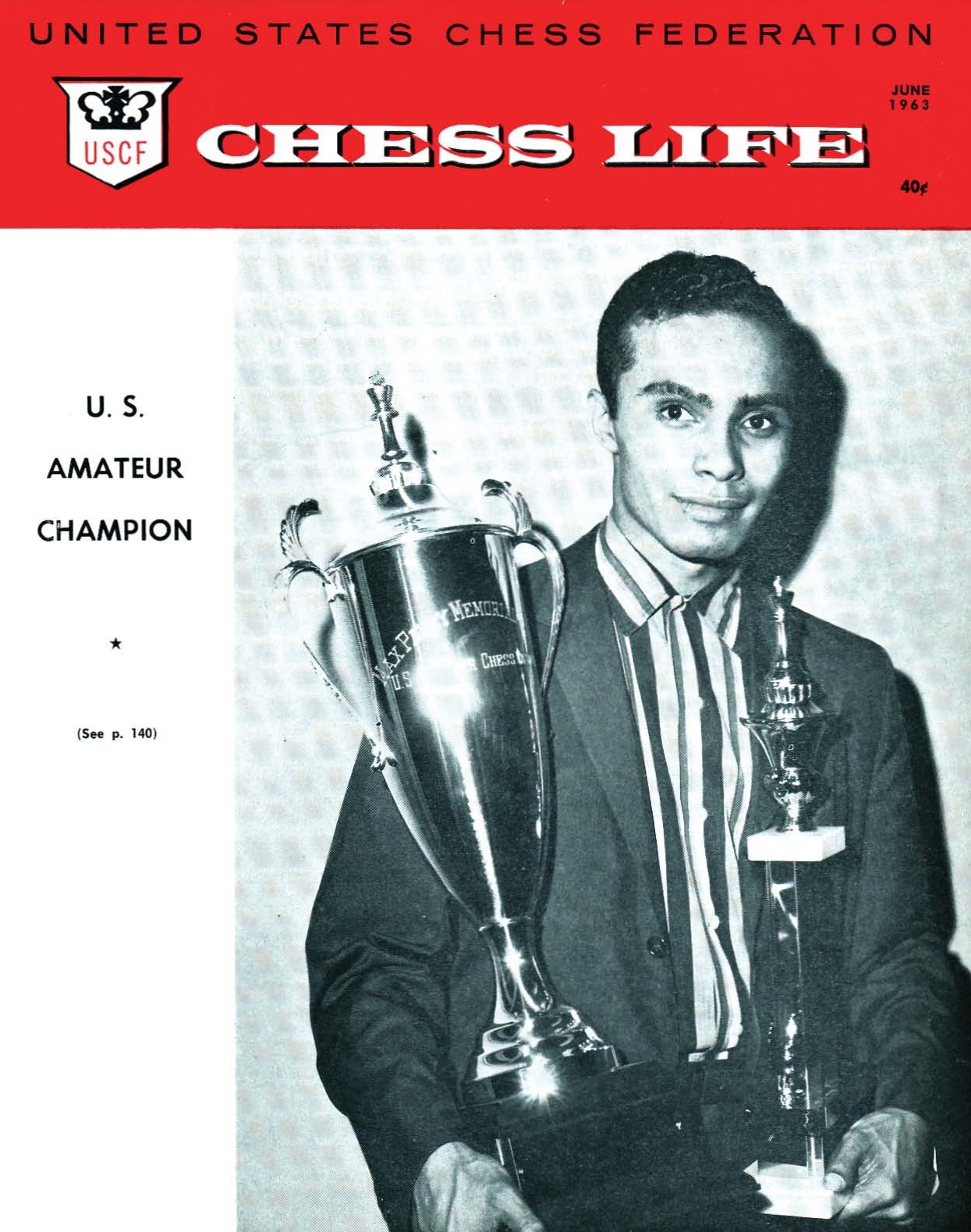
Clayton’s first rated-tournament was the District of Columbia Open in 1959 in which he placed 6th. He got an impressive rating of 2020 as a result. In the early 60s, the Claytons bore two daughters. Darlene found humor in the fact that her father tried to expose his daughters to chess to no avail! “I couldn’t sit still that long,” she joked.
At this point, Clayton became deeply involved in computing sciences and was a specialist at Hydronautics, Inc. in Laurel, Maryland. At that point, he was still trying to maintain his chess activity along with family duties. During Memorial Day weekend in 1963, Clayton entered the U.S. Amateur in Asbury Park, New Jersey as the 8th ranked player in a field of 160 players.
With a rating of 2102, the 24-year old Clayton had kept pace with other youthful front-runners. Going into the last round, three players had 5-1/2 points, Clayton, Stan Tomchin and David Daniels. Clayton quickly drew with Tomchin and Daniels was held to a draw by Charles Rehberg. As a result, Clayton won on superior tiebreaks among several players ending with a 6-1 score. Here is his game with Milton Danon, who would later win the 1979 U.S. Amateur.
Selected Games of Kenneth Clayton
Finally, Clayton would eclipse the 2200 rating barrier in June 1967 and earn the National Master title. He was the fourth Black player to earn the accolade. Walter Harris, Frank Street, and Leroy Jackson preceded him. While working in Vietnam, Clayton won the 1968 Vietnam Chess Championship held at the Tan Son Nhut USO in Saigon.
~Paul Truong
In around 1970, Clayton met Tien Truong and his 5-year-old son Hoainhan Truong, who assumed the name of “Paul.” His father had already taught him the basic chess moves. Despite the fact that the boy couldn’t speak English, Clayton took the inquisitive and curious boy under his wing. He taught him the finer points of the game, took him to tournaments, and soon recognized that he possessed a talent for chess.
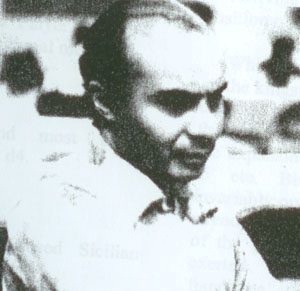
“He was always attentive, retained what I taught him, possessed good nerves and evaluated positions objectively. I recall one game against a strong player, whom Paul defeated in an ending in which he used a Bishop to trap his opponent’s Knight on the run of the board. Playing virtually a piece up, he just walked in with the King. He had seen a similar maneuver in one of my games.”
The relationship continued after the Vietnam War was over. Both Tien and Paul endured a tortuous journey to arrive in New Jersey December 1st, 1979. You can read Hough’s article here. On June 17th, 2007, The Chess Drum ran an article about Truong and Clayton’s special kinship. Truong sent The Chess Drum the following note about Clayton:
“He is the most instrumental person in my chess career (other than my father) who took me to all the chess tournaments when I was young. It was quite a challenge because we could not communicate with each other except for hand signals and pointing things out on the chess board. I developed my playing style through him. In addition to chess, I learned how to properly act on and off the chess board. He is a class act.”
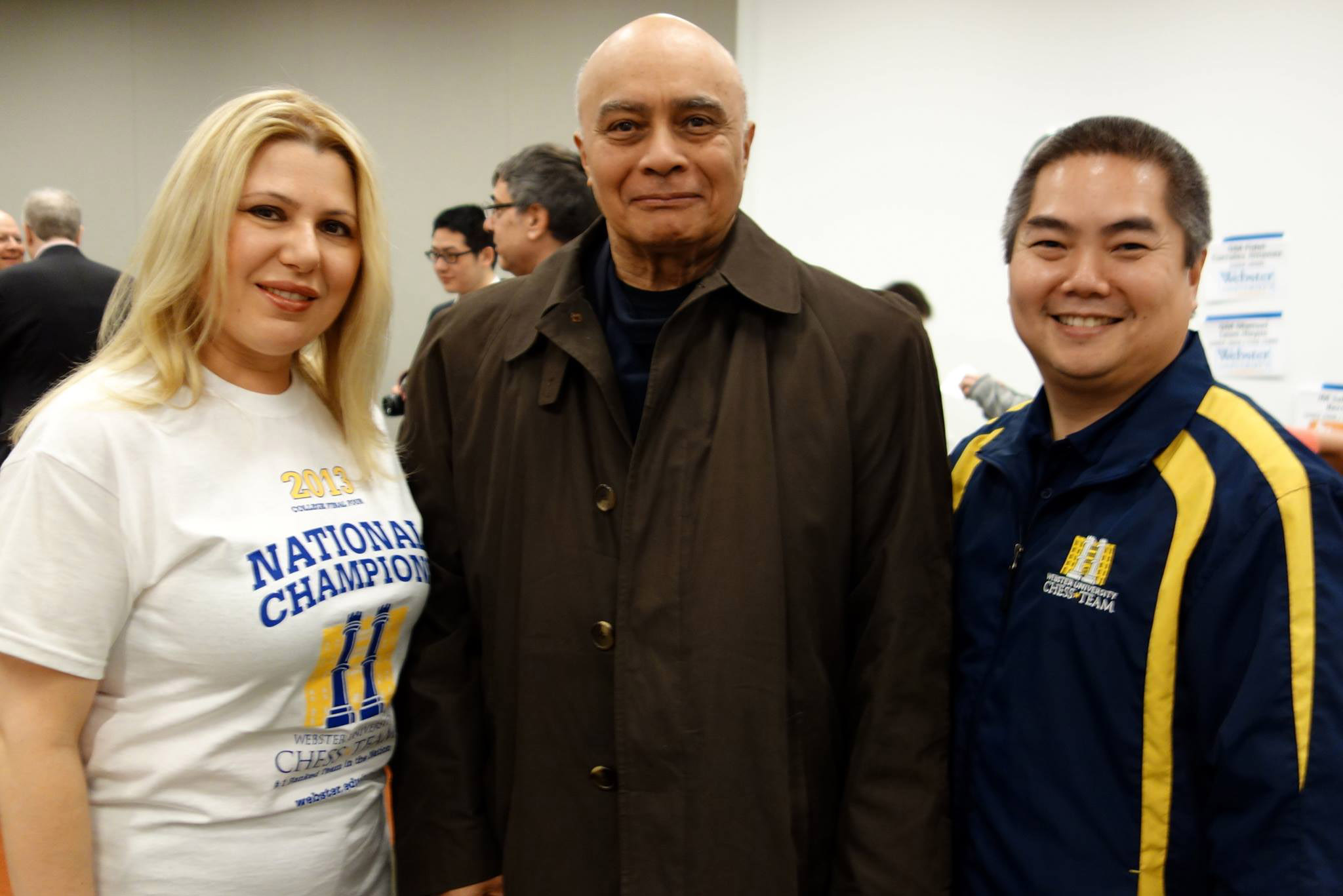
FIDE Master Paul Truong (right) pictured here with Kenneth Clayton with his wife Grandmaster Susan Polgar in Rockville, Maryland. He stated, “A few years ago when the College Chess Final Four was in Washington, DC, he came to visit my wife and I. He even came to St. Louis to visit us and my sisters in law.” Photo courtesy of Paul Truong
Clayton continued to play intermittently and battled the then-World Champion Anatoly Karpov in a 1977 simultaneous exhibition in Maryland. Also included below is a bruising battle against his chess peer, the multi-talented Charles Covington and lastly a battle with IM Marcel Sisniega. Sisniega would become an 8-time Mexican champion, a Grandmaster and notable movie director. Sadly the Mexican legend died in 2013 at age 53.
Besides his own chess activity, Clayton helped Paul to rekindle his interest in chess after as he was adjusting to the U.S. Another one of the players he is famously associated with is Baraka Shabazz, a talented teen phenom who was the subject of widespread media attention in the early 80s. Clayton can be seen in the following three-minute video mentoring Baraka.
Video by ABC News
Despite his first marriage ending in 1966, Clayton decided to remarry in 2010 to Miriam Parker. Besides being a Life Member of the U.S. Chess Federation, he enjoyed hobbies such as scuba- and cave-diving by exploring the beauty of marine life and the bowels of underwater caves. Unfortunately, he had to give up diving because he contracted a sinus condition aggravated by depth pressures. However, he also enjoyed photographing birds and riding his bike.
His daughter Darlene stated that in June her father was still lucid, but what followed was a precipitous decline in health. Clayton spent the last few weeks in hospice care where he died peacefully while surrounded by loved ones. He is survived by two daughters (Diane and Darlene) from his first marriage to Serilda Taylor, three grandchildren, his brother Robert Clayton, Esq. and a host of relatives and friends.
.jpg)
Four generations here! Ken Clayton with his mother Lela Yvonne Clayton (left), daughter Darlene and granddaughter Klarke. Photo courtesy of Darlene Clayton
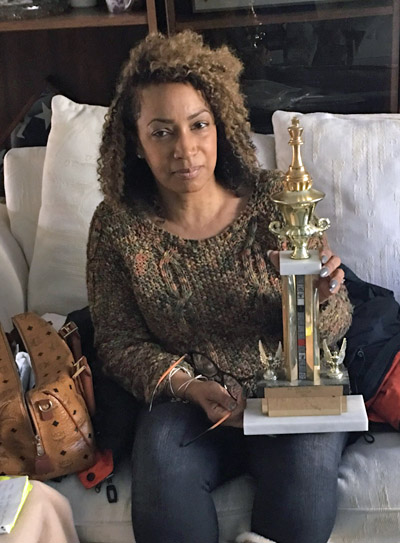
Diane Clayton Koontz holding her father’s 1963 U.S. Amateur trophy
Photo courtesy of Darlene Clayton
There is a proverb, “When an old man dies, a library burns to the ground,” and it is certainly true in the case of Kenneth Clayton who lived during Bobby Fischer’s rise to prominence and had so many lessons to give. As his memory faded from the ravages of Alzheimer’s, he left behind some of the brighter moments in the sunrise of chess in America and remains one of the trailblazers who set the stage for popularizing chess in the Black communities. Many of our pioneers may never know how many hearts they’ve touched, but part of this library will remain!
Saturday, January 13th, 2018
Calvary Episcopal Church
820 6th St. NE
Washington, DC 20032
Visitation: 10am
Funeral: 11am


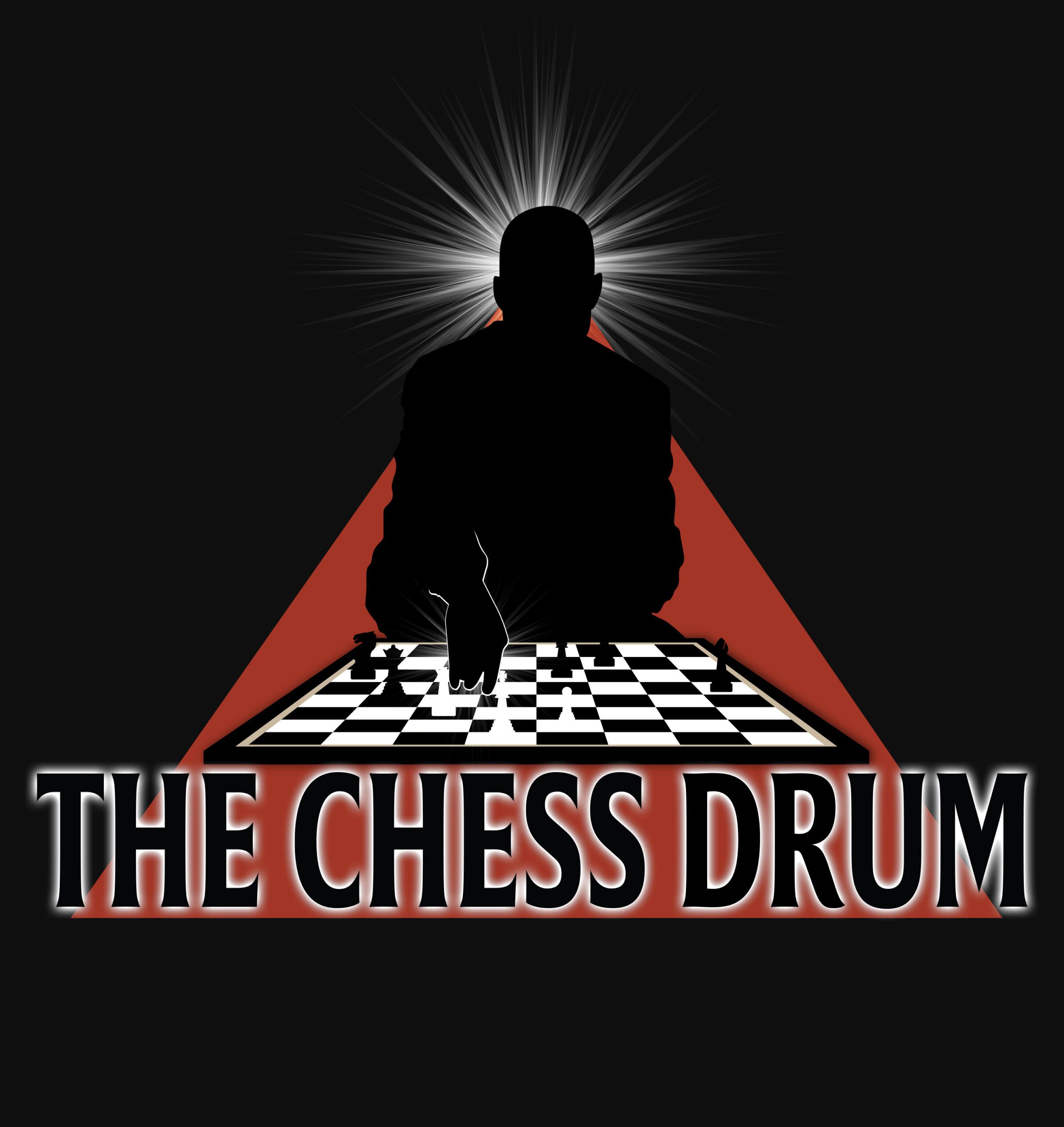
I was very fortunate to play and lose many chess games to Ken Clayton. He was always very generous and patient with us younger players. I would many times arrive unannounced at his home on 16th Street and he would invite me in to play. He was always serious with chess and respected the game. I got from him that there was another level of competitive chess which required study and hard work. He will be missed and I am very thankful that I had him to look up to.
Philip Lacy
Ken was a wonderful friend and chess tutor. He’d come to my apartment in upper Marlboro on Sundays to tutor me when it was decided by many that I would one day make master. I never did make master but managed to become a high Expert, and Ken had a lot to do with my progress. His wry sense of humor and friendship will be deeply missed and treasured. Ken was a gem whose occasional visits to DuPont Circle were legendary. I recall one particular amazing Saturday when Ken Clayton and Frank Street sauntered over to my table and watched my games. He was a national treasure.
U.S. Chess Champion Dies at 79
https://afro.com/u-s-chess-champion-dies-79/
In 1955, Ken and I were both freshmen at Harvard. He was then playing the #3 board on the Harvard Chess Team. I had tied Horowitz in a simultaneous exhibition at Deerfield Academy earlier that year (see cover story Chess Review, April 1955) but had been prohibited by my father from continuing to play competitive chess. Nonetheless, I could not resist visiting a Harvard Chess Team session and saw that Ken had just beaten another player. So I sat down and played a hard-fought game that I was fortunate to win. Since we lived in adjacent houses in the Harvard Yard, I became his sparring partner our freshman year but lost track of him when he left Harvard the following year. Many years later I learned of his magnificent accomplishments through a Harvard alumni report. With Internet help, I contacted him and was surprised that he remembered me. My wife and I subsequently had lunch with him and Miriam in Maryland. We kept in frequent contact for several years after that until February 2017. In October, Miriam called me to report that Ken was hospitalized with Alzheimer’s disease and in December she called with the sad news of his passing. Ken was a true gentleman and a scholar and could not have been more modest about his many accomplishments. He will be missed by all of us who knew him.
Thank you for your reflection!
I met Mr. Clayton at some of the local chess tournaments in the D.C. area in the nineties . He was such a kind gentleman and shared many great chess stories with me. He and Mr. Street gave me motivation to play in the U.S. Amateur Championship, where I was on board 1 three times in the last round, but only managed one 2nd place finish. I only reached the expert level, but Ken always gave me some nice tips to reach the next level. Thank you so much for your kindness.
I never had the honor, but I appreciate your story. It helps add another detail to his purposeful life.
I received an A for my term paper, “The last 3 days in Saigon”. It was about how my family and I got out of Viet Nam during the fall of Saigon in 1975. Ken was our savior. The professor was very touched when reading the paper and said my story would make a very nice movie. Ken taught me how to play chess at Le Cercle Sportif Saigoinnaise in Saigon (a “French Country Club”). I did not know then that Ken attended the Ivy League Harvard and he was a Chess Master. I did not know that Ken was a CIA undercover agent until after the plane carrying Ken, my family and other refugees landed in Guam in May 1975–no wonder my family and I had no troubles getting in the American DAO Compound (Tan Son Nhut airport) and boarded the C-130 plane later. But Ken did not leave Saigon alone, he brought along my family and Thu’s and helped us to freedom. In 2016, my husband searched for Ken in the WWW, and thanks to Messrs. Michel Truong and Paul Truong, I was able to get in touch with Ken again. Ken still remembered me. Ken must have been very happy to know that my family and I are doing well, thanks to this land of freedom and opportunity. It was like yesterday when I saw Ken leaving the Country Club with the briefcase in his hand… the “xich lo” driver always waited for him outside the Club by the pavement.
My father, Bennett Gray Sr, was friends with Mr. Clayton and introduced me to him in 1970. They were both members in a chess club in New Jersey. It was a pleasure meeting Mr. Clayton, and I recall him being a very kind man.
Interesting chess by Mr. Clayton seems like a very sharp player, close game wih Karpov the 12th, thanks for sharing.
As a 14 year, old I remember skipping track practice at Dunbar High School in D.C. to play chess at Banneker Recreation center in the evenings. I would play Ken, he would analyze my chess game and give me encouragement. It was an honor to meet, play, and have Ken to tell me that I have great potential as a chess player in October and November of 1979.
Kenneth is my oldest brother. He absolutely, positively was the smartest person I’ve ever known. I remember the ceramic elephant that he sent Mom from Saigon, Vietnam. It was only wrapped in two cut cardboard pieces, and a heavy wire surrounded it. We could not believe it got to our home in Washington, DC without a scratch. My brother was always doing word puzzles, reading, and of course playing chess. Although I was growing up while he was in Vietnam, I was able to meet 3 young people that came out of Saigon with him. They moved in our home, and my Mother helped them receive schooling, become American citizens, and assisted with their assimilation of their new life. The one thing that sticks with me the most is probably my brother’s love for mashed potatoes. My Mom made it a point to make a whole pot just for him. I mean nobody, and I mean NOBODY could have any. He was a most remarkable person, but mostly I am proud to have had him as my big, big brother.
I never knew Ken as the chess master he was but, rather as another avid cave diver, like myself. We made many memorable excursions into underwater caves northern Florida in the 80’s and early 90’s. I would love to relive those old days with Ken.